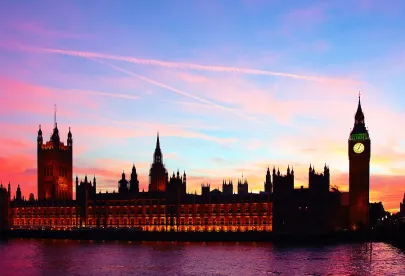The recent court ruling known as “Lloyds 3” answered lots of questions about the need to revisit past transfer payments, where those transfer payments had been calculated without taking into account the obligation to equalise benefits for the effect of unequal guaranteed minimum pensions (GMPs). However, the more we look at Lloyds 3, which focused on the obligations of the trustee of a number of pension arrangements connected with the Lloyds Banking Group, and try to apply it to the real life history of other schemes, the more we see the judgment has left pension scheme trustees with a number of unanswered questions.
Take, for example, bulk transfers. In Lloyds 3 the court only examined the obligations of the Lloyds schemes trustee in connection with bulk transfers out on a mirror-image basis (i.e. where the rights of the members under the receiving scheme would be the same as the rights of the members under the transferring scheme), for members with deferred pension entitlements. In addition, the court only looked at the legal position as between the trustee of a transferring scheme and the transferring member, rather than the position between the trustee of a transferring scheme and the trustee of a receiving scheme. The court in Lloyds 3, therefore, viewed GMP equalisation and bulk transfers through a narrow lens. In reality, over the years, bulk transfers of a variety of benefits, and bulk transfers on a non-mirror-image basis, have often taken place. We can probably draw some analogies from other elements of the Lloyds 3 judgment when considering these other types of bulk transfer, if the rules of the scheme have been correctly applied, however this should be approached cautiously and a case-by-case consideration is going to be necessary. We flag below a number of complications that we have come across in practice.
As regards the rights between the trustees of the transferring and receiving schemes following a bulk transfer, the answers may be found in an analysis of the contractual arrangements between them. Fortunately, most material bulk transfers will have been documented in formal transfer agreements. The transferring trustees may find that they have retained the liability to pay top ups to unequalised transfers paid out of their scheme in the past, or potentially find themselves subject to warranty claims for GMP equalisation liabilities that have unexpectedly passed to the receiving trustees. Of course, that’s the theory, but practicalities will need to be considered, such as the scope for claims to be time barred by operation of limitation rules and/or the fact that the transferring trustees may not have ready access to assets to settle claims if the transferring scheme has wound up.
The position may be equally complex for the receiving scheme trustees who accepted the bulk transfer. Receiving scheme trustees might find themselves subject to unexpected liabilities, particularly where the bulk transfer was designed as a “merger” whereby they agreed to receive all of the assets and liabilities of a previous scheme. It seems that there is scope for the trustees in that situation to have inherited liabilities to pay top ups to transfer payments paid out of the transferring scheme prior to the merger, for individuals who arguably never formally became members of the receiving scheme. They may also have unexpectedly taken on liabilities for arrears of benefit payments where those benefits were underpaid by the transferring scheme as the benefits in question had not been equalised for the effect of GMPs, even though the trustees of the former scheme had considered they had settled all liabilities in relation to those members before the bulk transfer. Practical issues such as uncertainty regarding whether claims are time barred, and gaps in the data available may hinder trustees’ attempts to scope properly their exposure to these new and unanticipated liabilities.
Whichever way we look at it – from the standpoint of the transferring trustees or receiving trustees – Lloyds 3 has only gone part of the way in addressing where GMP equalisation liabilities will fall where there has been a bulk transfer. However, a careful analysis of the contractual agreements provides a good starting point when trying to fill in the gaps and gauge the trustees’ obligations. That should, of course, extend to an examination of any contractual protections in place such as warranties and indemnities, which may potentially increase the exposure of trustees or, hopefully, provide some comfort.




 />i
/>i

